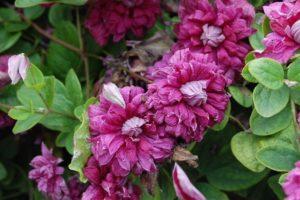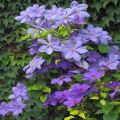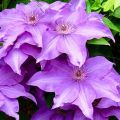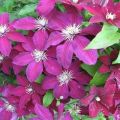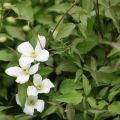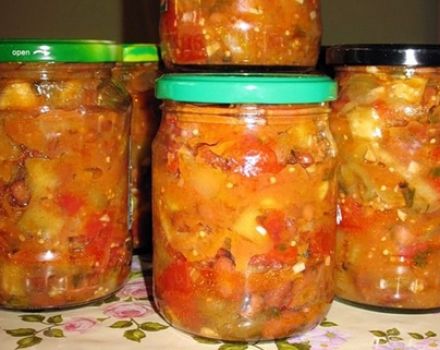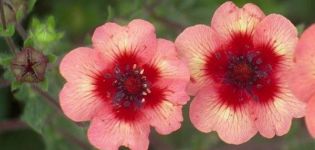Description and characteristics of Clematis Hegley hybrid, planting and pruning group
Clematis is an attractive crop that can be grown in the garden, the Hegley hybrid tolerates changing climatic conditions and has large buds. Proper care allows you to enjoy flowering several times during the season.
Description and features
Clematis Hagley hybrid has bright, large inflorescences. The plant belongs to the buttercup type, the culture is perennial, the shoots are large in the form of vines. Clematis Hegley belongs to hybrids, the leaves are green corrugated. Inflorescences of pearlescent color with a pink border. The plant needs regular pruning. It blooms violently throughout the summer, until the first frost.
The plant has the following features:
- the length of the shoots can reach 3 meters;
- shoots have brown bark;
- blooms immediately after planting;
- during growth, it is necessary to install a support or plant it near the fences;
- differs in endurance to changing weather conditions;
- in the absence of timely pruning, it can lose its decorative qualities.
The plant has a large number of inflorescences that can decorate the garden area.
Breeding history
Clematis Hegley Hybrid was bred by British breeders. This variety appeared in 1956, was first introduced by the scientist Picton in England. Gradually, the culture gained great popularity and began to be grown in various countries.
Reproduction methods
Clematis can reproduce in a variety of ways. The breeding method depends on the age of the bush and the preferences of the person.
Shrub division
To obtain high-quality planting material, only a mother bush with an age of at least 4-5 years is used. The bush is divided into several parts and transplanted to a new growth site.
Important. Root damage should be covered with charcoal to prevent rot.
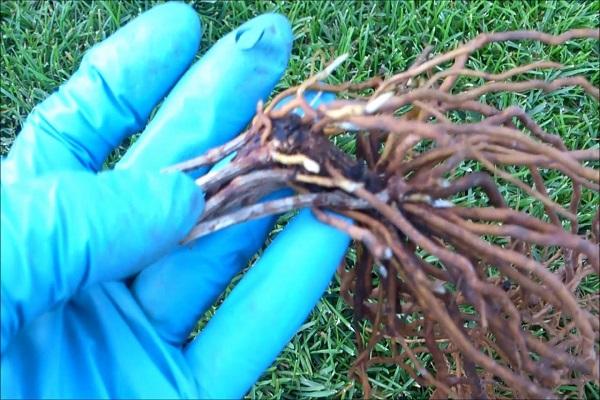
Cuttings
To use this method, you must choose a strong shoot without damage. For reproduction, the middle part of the shoot is used, on which there are buds. Cuttings are placed in cold water for a day. Prepare a seedling box with a nutrient mixture. Mix humus with soil and sand. Cuttings are planted in the ground and left before the roots appear.After 50-60 days, it is necessary to plant the cuttings in the soil.
Important. Cuttings can be immediately planted in the ground, however, it is necessary to use insulation in the form of a glass container.
Layers
This breeding method is most often used in the spring. Strong shoots are selected, which are sprinkled with soil. The shoots must be strengthened, for example with staples. An incision is made on the shoot at the point of contact with the soil. Roots will appear in a year. Shoots are separated from the mother bush and planted in the ground.
Seeds
Clematis Hegley practically does not propagate using seeds. Since the bush loses its decorative qualities. To use the seed propagation method, it is necessary to soak the material in water for several hours, and then plant it in a seedling container. The container is covered with plastic wrap and placed in a sunny place. In order for the seeds to sprout quickly, it is necessary to observe a temperature regime of at least 18 degrees. After 2 leaves appear on the seedlings, you can dive the seedlings.
After the seedlings reach a height of 10 cm, you can plant in open ground.
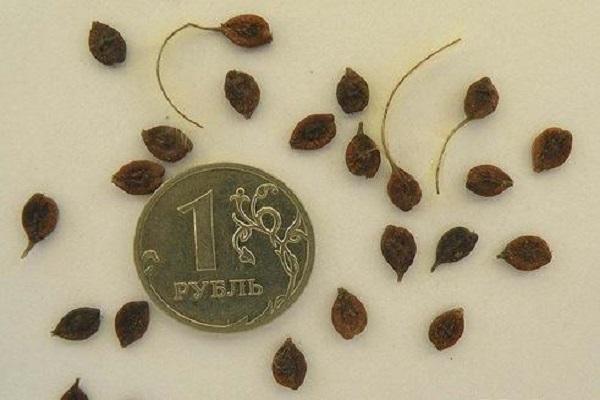
Landing features
The plant takes root well, but it is necessary to observe the terms for planting and choose the right place.
Recommended timing
It is necessary to plant a crop in mid-September, this will allow the roots to strengthen and endure the winter period. In regions in which there is a cold period, clematis is planted in the spring, when the temperature and soil warm up.
Choosing the right place
The landing site must be protected from drafts and winds. It is also not recommended to plant a plant near buildings. Also, the plant does not tolerate if groundwater is located on the surface of the soil. The soil must be nutritious. Contain enough organic fertilizers. The planting site should be sunny, but the sun should hit the plant no more than 6 hours a day. Otherwise, the inflorescences and leaves will fade.
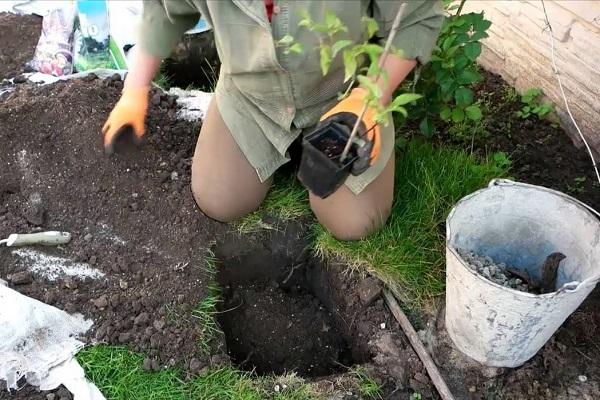
How to choose and prepare planting material
If planting material is purchased, it is necessary to ensure that the sprout is in the bag and has a nutrient mixture. Keep planting material in a cool place. If the sprout is purchased earlier than the prescribed time, it must be planted in a box with a nutrient mixture. Before planting, the seedling must be watered with a growth activator and planted in the ground. It is necessary to purchase seedlings no earlier than 2 weeks before planting in open ground.
Landing scheme
Planting a plant is carried out according to the following scheme:
- dig a hole 50 cm deep;
- a broken stone or pebble must be laid at the bottom of the hole;
- using a nutrient mixture, it is necessary to make a small hill, the seedling is placed on the hill, and the roots are straightened;
- cover with soil to the root collar, but not less than 10-15 cm, lay sawdust on top, pour abundantly with water.
In order for the bush to develop well, it is necessary to immediately establish a support and regularly carry out a garter.
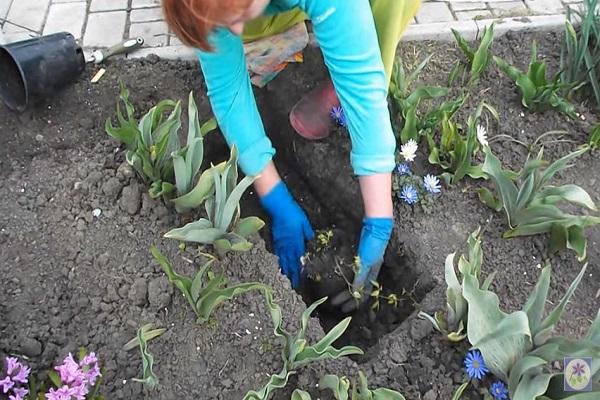
Care
Proper care is necessary for the plant to develop well and bloom in the first year after planting in the ground.
Watering
The plant prefers moist soil, so watering is necessary often. It is necessary to irrigate 3 times a week, one bucket for each bush.
Important. If the soil is wet, watering is tolerated, otherwise fungus may form that damages the roots.
Top dressing
Clematis prefers a sufficient amount of nutrients, so feeding is carried out regularly.
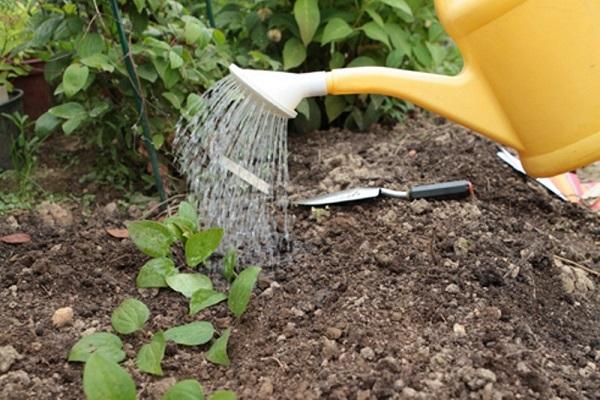
The first
Fertilization must be carried out immediately after warming up the soil. Top dressing of clematis is carried out in the second year after planting. At the end of April, it is recommended to apply nitrogen fertilizers. This bait will increase the growth rate of the bush.
The second
In mid-May, complex mineral fertilizers are applied, which strengthen the shoots. It is recommended to add fertilizer during root watering.
Third
Before flowering begins, potassium and phosphorus are added, which increase the flowering intensity. The fertilizer dissolves in water and is watered after sunset.
Fourth
Wood ash must be added in mid-August. Fertilizer can be dissolved in water or scattered over the ground and watered with warm water.
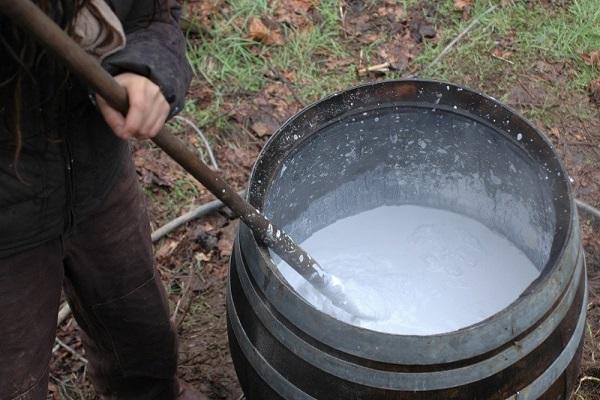
The fifth
Carried out after the end of flowering. Organic fertilizer is applied to the soil. Then the soil is dug up, and the plant is prepared for winter.
Mulching and loosening
Using mulch helps to keep soil moisture. Also, the soil is loosened once a week. Sawdust or pine needles can be used for mulch. Also, this method of care prevents the formation of weeds, which are the spread of diseases.
Pruning
It is recommended to cut the clematis bush immediately after planting if the method of dividing the bush was used. The next pruning is carried out in early summer, weak shoots are removed. Also, pruning is carried out in July, the gardener thus forms the necessary shape of the bush. After flowering, the shoots are shortened by half, and the plant is prepared for the winter.
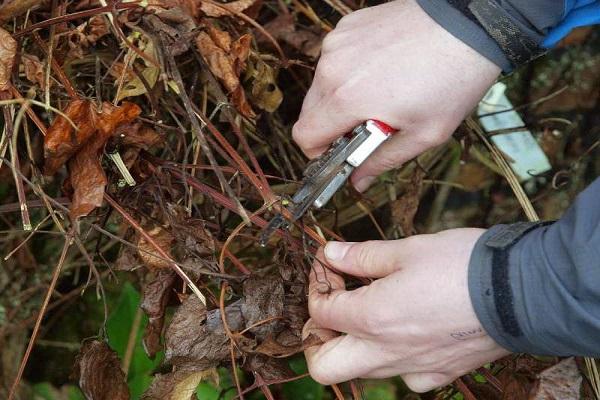
Preparation for wintering
In mid-September, organic fertilizers are applied and the plant is prepared for winter.
Shelter for the winter
In order for the bush to endure frosts, the roots are covered with spruce branches or straw with soil. The top of the plant also needs cover. For this, burlap is used, which is wrapped around the ground part. If necessary, you can use a plastic bag. However, ventilation must be observed and openings must be made for fresh air.
Rejuvenation
After the plant has faded, old shoots and damaged areas of the bush must be removed. It is also necessary to rejuvenate the roots. To do this, you need to step back from the bush by half a meter and make deep holes with a drill in the direction of the roots. After removing the drill, nutrient soil is placed in the holes, consisting of humus and chernozem. This procedure will saturate the roots with nutrients and promote the appearance of new shoots.
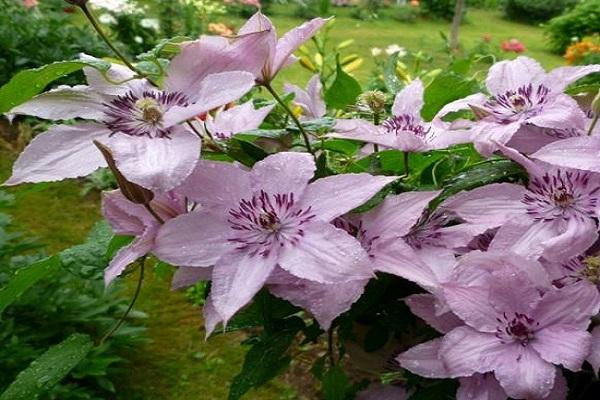
Diseases and pests
Clematis is very often exposed to diseases, especially if gardeners do not follow the rules of care.
Gray rot
The disease is manifested by the formation of brown and brown spots on the leaves. The disease spreads quickly and can completely cover the bush in a short time. For treatment, spraying with the substance "Fundazol" is carried out every 10 days.
Withering
Manifested by lethargy of shoots and leaf fall. Root fungus, which occurs in deep soil layers, provokes such problems. For treatment, spraying with copper sulfate and the introduction of mineral fertilizers by the root method are used.
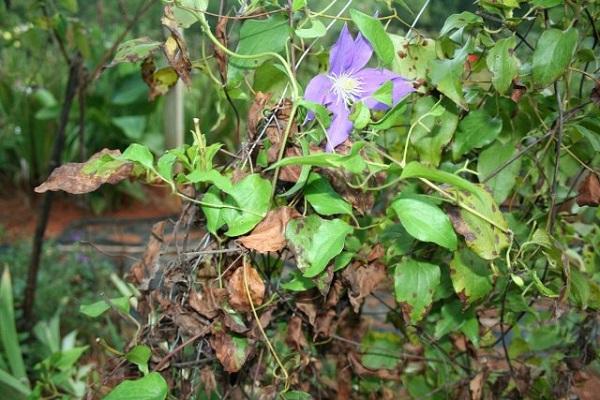
Rust
The disease manifests itself in the form of rusty spots, which most often appear on the leaves, but can also occur on the stems. For treatment, the affected areas are completely removed, and the bush is sprayed with Bordeaux liquid.
Powdery mildew
It appears in the form of plaque on leaves and stems. For treatment, the bush is sprayed with soapy water or copper sulfate. Spraying must be carried out every 5 days.
Spider mite
The pest is small, so it is very difficult to detect it on the leaves in a timely manner. The first signs of the disease are the presence of black dots on the leaves and cobwebs. Garlic tincture or Bordeaux liquid can be used for removal. If there is an accumulation of pests, the vine is removed.
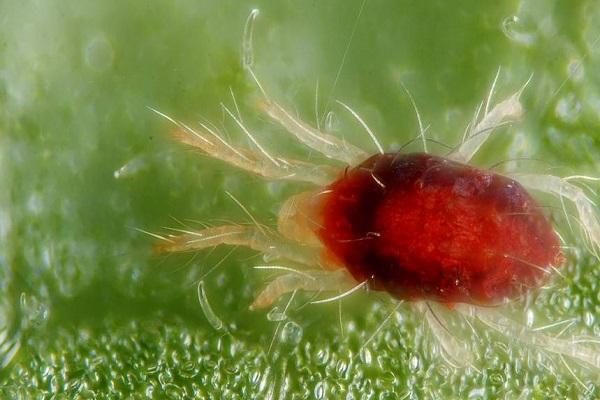
Nematodes
Most often, the disease occurs as a result of the accumulation of weeds and improper crop care. The infected plant does not respond to treatment, so the damaged part must be removed. To prevent the occurrence, you can plant dill or marigolds nearby.
Application in landscape design
Bushes can be planted in separate areas and are used to create slides and decorate fences. Various varieties can be used to create the desired landscape. Clematis is also used with other crops in the garden.
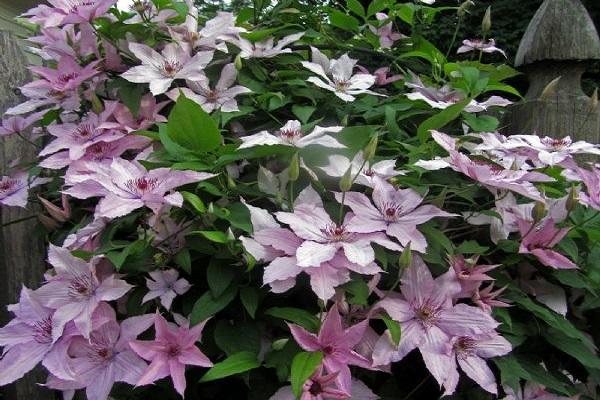
Reviews
Marina, 36 years old, Moscow region: “I use clematis, I decorate the garden plot. The plant has an attractive appearance during the flowering period. In order to increase flowering, I prune the vines in the fall. And after the plant has faded, I remove the wilted buds. "
Alina, 28 years old Rostov-on-Don: “I have been growing clematis at my dacha for a long period. The culture takes root well after transplantation. I regularly apply organic fertilizers in the form of chicken droppings in the spring. This not only strengthens the plant, but also makes the flowering period long. "
Outcome
Clematis Hegley has a delicate bud color and can tolerate a change in growth location. The plant can be grown in various regions and is used to create garden compositions.

